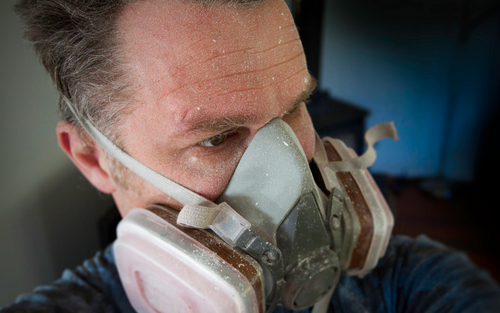How to Select a Respirator Filter and Cartridge
If your worksite has hazards that can be inhaled, you’re probably familiar with respirator filter cartridges. Heavy respirator use means changing filters or cartridges from time to time. There’s no set life span for filters or cartridges, but the more contaminants they trap, the less protective and less comfortable they become.
There are over 20 different types of 3M respirator filters and cartridges designed to protect against different hazards—how do you know which ones are right for your job? Here are things to look for and think about during your hazard assessment and when you’re buying new or replacement respirator filter cartridges.
Your Jobsite Hazards
Filters are designed to protect against airborne particles, and cartridges absorb hazardous vapors and gases: both keep you from inhaling what you’re not supposed to. When choosing a filter, consider what you’re going to be breathing on your jobsite.
- Dust is dry particles that either exists in the environment or are produced through work;
- Mists or aerosols are liquid droplets suspended in the air;
- Bioaerosols are living or non-living particles with a biological origin, like fungus, bacteria, viruses, dander, or pollen;
- Fumes are the aerosols produced when gaseous materials condense to form a solid;
- Fibers are solid particulates that are longer than they are wide.
Occupational exposure limits (OELs) matter, too. This is the upper limit on acceptable concentrations of hazardous substances set and enforced to protect workers. It’s determined by air sampling and the number can also determine the necessary level of respiratory protection.
Filter Ratings and Classification
Anyone wearing or buying a filter needs to know if there’s oil in the air in order to get the correct class of filter: N class filters are for no oil sites, R for oil resistant, and P for oil proof. Filter efficiencies can be either 95%, 99%, or 100%. The number tells you how much of the particulate in the air will be filtered out—a filter rated 95 means that 95% of the particulate will be filtered out.
Assigned Protection Factors (APFs) are the level of expected respiratory protection. An APF of 10 means that the respirator and correct filters can protect the wearer up to 10 times the exposure limit. Quantitative fit tests can help you obtain better protection from your respirators.
Other Worksite Conditions
Think of what other properties you need your respirators to have when you’re doing your hazard assessment. Carbon can help reduce exposure to nuisance odors. Filter media is light and breathable, but also offers protection. Plastic encasements are good for protection in places where there’s a lot of flying debris or wet environments, such as decontamination showers.
Respirator Filter Cartridges from PK Safety
We’ve been in the workplace safety business for a while, and our experience can help you and your employees stay safe and well-equipped. If you still have questions about what respirator kit or safety gear is right for the job you’re doing, our safety experts are available to help. You can contact PK Safety online or by phone at 800.829.9580.
Recent Posts
-
Customizing Gas Detectors: Tailoring Solutions to Fit Your Unique Requirements
In today’s diverse industrial landscape, a one-size-fits-all approach to safety simply doesn’t cu …Jul 3rd 2024 -
10 Ways to Prevent Wildfires
You can prevent wildfires by extinguishing flames before you leave the worksite. Avoid practicing …Jul 1st 2024 -
ANSI/ISEA 138 Safety Gloves: Ensuring Hand Protection
The human hand is an anatomical masterpiece and arguably the greatest tool attached to our bodies …Jun 25th 2024





